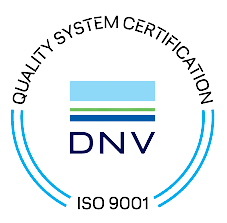
In recent years, both data and temperature logging for refrigeration, data acquisition, and other applications has seen a transformation from traditional recorders to digital recorders. The shift from traditional to new has certainly seen advantages and is therefore considered in demand by industries.
There is always drift in the case of selecting a chart recorder and a data logger. Both are flexible, accurate, and genuine in terms of data logging and recording. The shift from chart recorder to data logger solely depends on the usage and demand of the industry type. To understand the difference between the two we need to look at their: size, usage, flexibility, accuracy, accessibility, maintenance, and environmental friendliness. It should be noted that there are two main types of chart recorders: strip and circular chart recorders. However, circular chart recorders are commonly used temperature chart recorders. Hence, we will here consider the difference between circular chart recorders and data loggers.
Firstly, Chart recorders are mechanical devices that consist of a paper chart rotating around a central hub. Which can be a pen on an articulating arm, drawing on a rotating chart. The pen arm moves based on the readings of a sensor. Whereas Data loggers are required for a multitude of reasons, frequently to ensure compliance with industry-specific regulations, and quality and environmental control procedures.
Below we will discuss the pros and cons of both Data loggers and Chart recorders to understand in depth the importance and the best utility of both products.
Chart Recorders and their Pros:
- It provides a quick view of the data. Chart recorders provide an instantaneous look at the entire data output without performing any additional steps.
- In a chart recorder, the charts and pens can be easily replaced.
- The availability of chart recorders comes in different chart sizes 3″, 4″, 6″, and 8″ chart varying as per data determination.
Though with its pros, Chart recorders also come with certain limitations, due to which industries may not prefer.
- It needs good care and maintenance, especially in terms of chart and paper replacement or refill.
- Chart recorders have been considered a bit unreliable because of their paper charts.
- Small charts provide less data resolution, whereas more flexibility. On the hand, Bigger charts provide higher resolution with less flexibility.
- The usage of amount of paper used by chart recorders can them into consideration due to environmental concerns.
Common applications for circular chart recorders include temperature and humidity measurements, flow rates, pH, and pressure, as well as a host of other process measurements.
Related: Applications For Circular Chart Recorders
Data Loggers and their advantages or pros:
- Data Loggers are more environment-friendly logging solutions compared to chart recorders.
- Choose a higher or lower resolution for your data on the computer
- Data loggers provide users to process the data with flexibility. Export data to other software to work with or graph.
- With no usage of charts and papers, data loggers provide accurate results with quick view data on units with displays.
- Data loggers also help to save costs through energy efficiency/environmental management or reducing wastage of non-compliant or damaged goods.
Cons:
- Data loggers might need a few steps to see the recorded data. The data is downloaded to a computer via any external device.
- The user must be well acquainted with the computer.
Take a look at the product range of our data loggers
With growth and high demand for digital technology, industries generally prefer selecting digital for usage, easy maintenance, more flexibility, and reliable data. Thus, Data Loggers can be an accurate choice for industries or businesses in the future.






